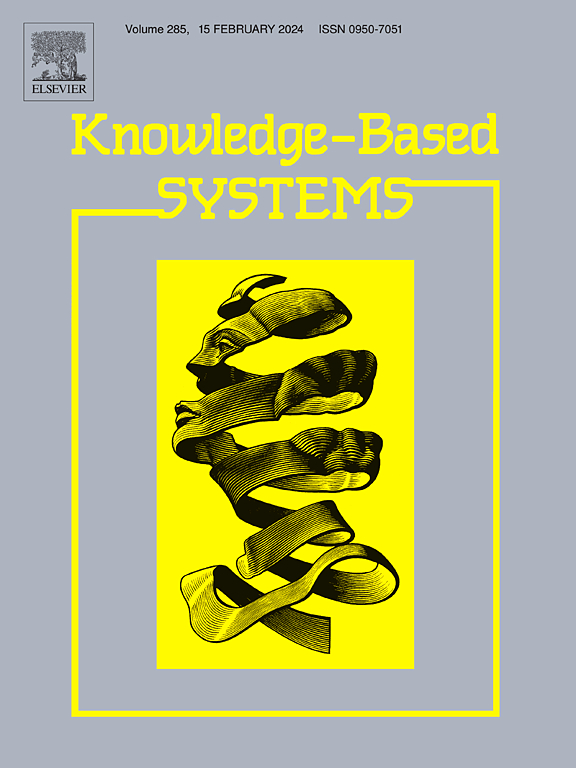用于知识图谱学习和推理的对比预测嵌入法
IF 7.2
1区 计算机科学
Q1 COMPUTER SCIENCE, ARTIFICIAL INTELLIGENCE
引用次数: 0
摘要
知识图谱嵌入(KGE)旨在捕捉知识图谱中关于实体和关系的丰富语义信息,这些信息对于知识图谱补全(KGC)和各种下游任务至关重要。现有的 KGE 模型通过构建间接前置任务和评分函数来区分实体和关系嵌入,以辨别不同类型的三元组。相比之下,本文介绍了一种名为 "对比预测嵌入"(CPE)的新型 KGE 方法,该方法无需定义评分函数或负采样。具体来说,CPE 根据三元组中已知的实体和关系嵌入,直接预测未知实体的嵌入,并与真实嵌入进行比较。此外,本文还提出了一种特殊的优化方法,以提高各种基于翻译的模型的性能。在四个基准 KG 上的实验结果表明,CPE 提高了原始 KGE 模型的性能,同时保持了较低的计算复杂度。在 FB15k-237 数据集上,CPE 使 TransE 的 MRR 和 Hit@k(k∈{1,3,10})指标分别提高了 1.55%、3.37%、4.58% 和 5.92%。本文章由计算机程序翻译,如有差异,请以英文原文为准。
Contrastive Predictive Embedding for learning and inference in knowledge graph
Knowledge graph embedding (KGE) aims to capture rich semantic information about entities and relationships in KGs, which is essential for Knowledge Graph Completion (KGC) and various downstream tasks. Existing KGE models differentiate between entity and relationship embeddings by constructing indirect pretext tasks and scoring functions to discern different types of triplets. In contrast, this paper introduces a novel KGE method called Contrastive Predictive Embedding (CPE), which dispenses with the need for defining scoring functions or negative sampling. Specifically, CPE directly predicts embeddings for unknown entities based on the known entity and relationship embeddings in triplets and compares them with the true embeddings. Additionally, this paper proposes a special optimization approach to enhance the performance of various Translation-based models. Experimental results on four benchmark KGs demonstrate that CPE improves the performance of original KGE models while maintaining lower computational complexity. On the FB15k-237 dataset, CPE enhances the MRR and metrics of TransE by 1.55%, 3.37%, 4.58%, and 5.92%, respectively.
求助全文
通过发布文献求助,成功后即可免费获取论文全文。
去求助
来源期刊

Knowledge-Based Systems
工程技术-计算机:人工智能
CiteScore
14.80
自引率
12.50%
发文量
1245
审稿时长
7.8 months
期刊介绍:
Knowledge-Based Systems, an international and interdisciplinary journal in artificial intelligence, publishes original, innovative, and creative research results in the field. It focuses on knowledge-based and other artificial intelligence techniques-based systems. The journal aims to support human prediction and decision-making through data science and computation techniques, provide a balanced coverage of theory and practical study, and encourage the development and implementation of knowledge-based intelligence models, methods, systems, and software tools. Applications in business, government, education, engineering, and healthcare are emphasized.
 求助内容:
求助内容: 应助结果提醒方式:
应助结果提醒方式:


